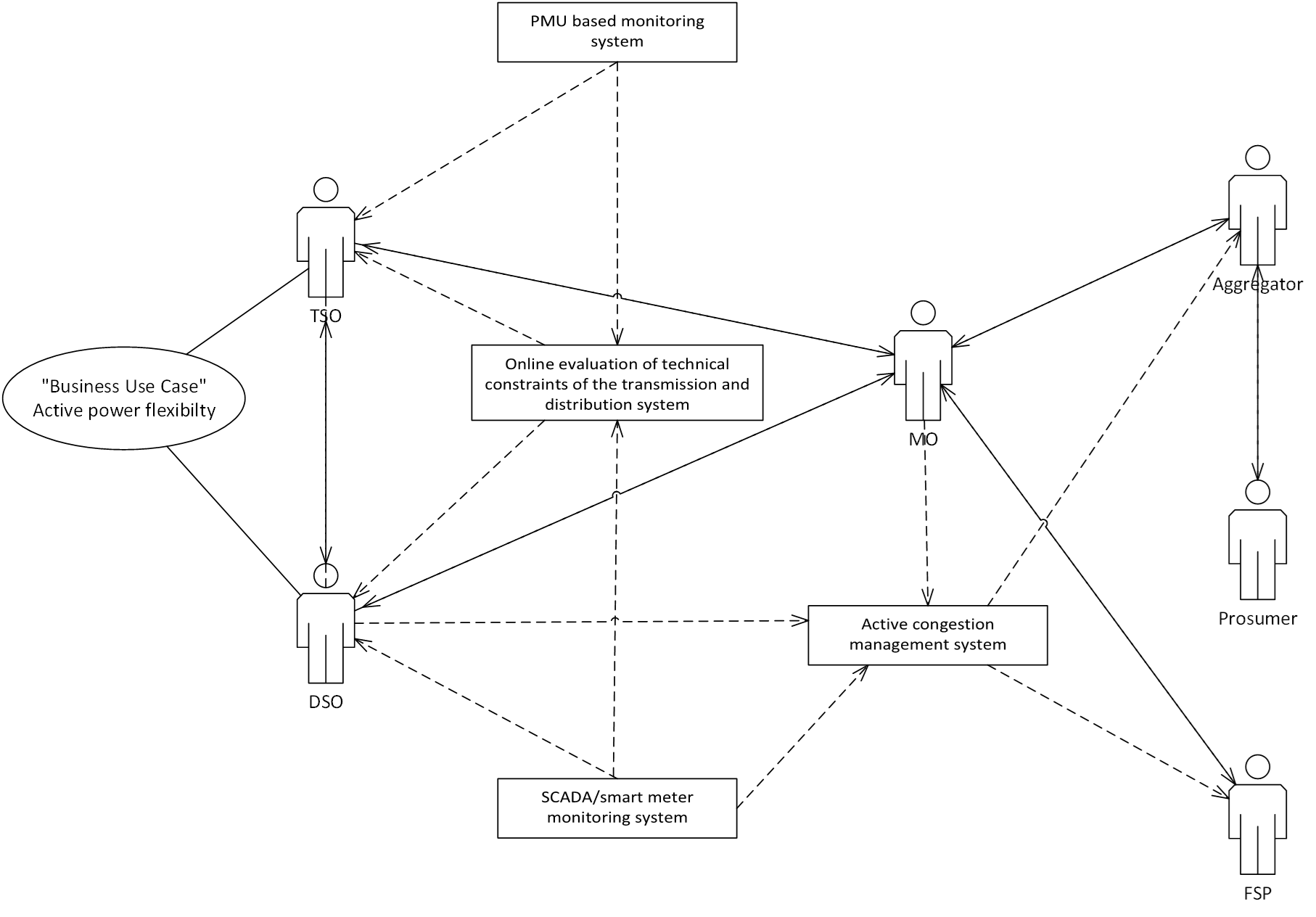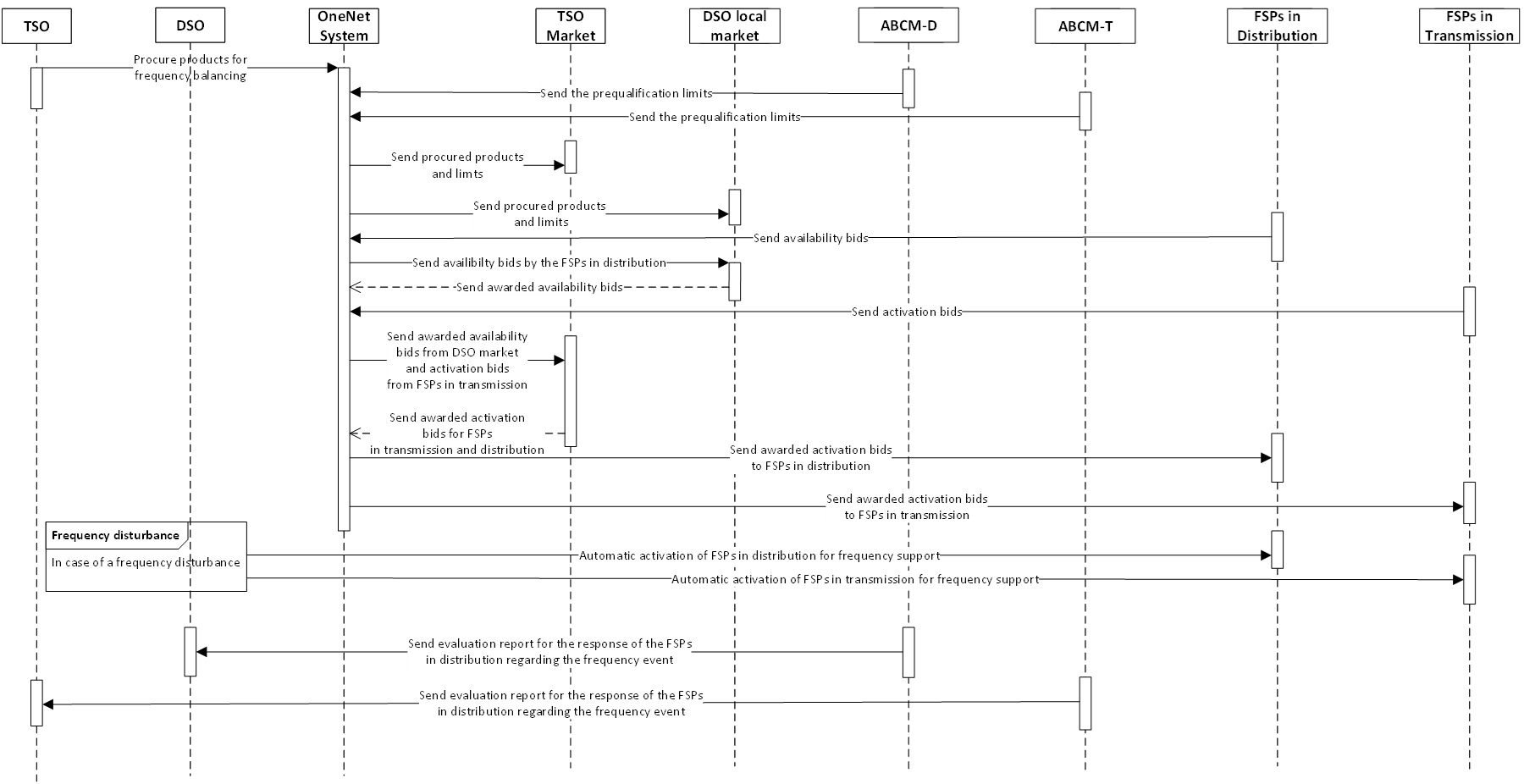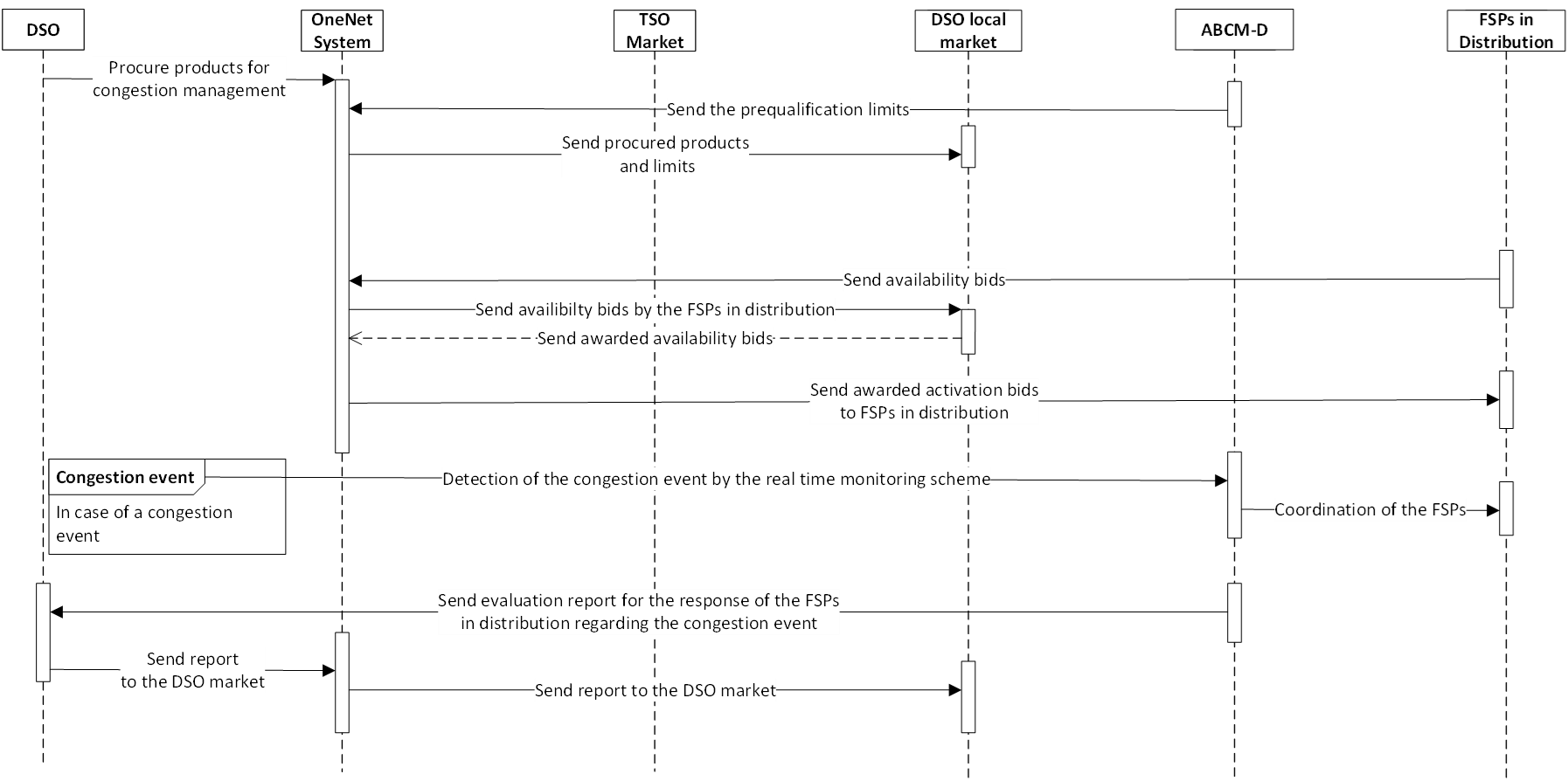SOCL-CY-01
1. Description of the Use Case
1.1. Name of the Use Case
| ID | Area /Domain(s)/Zone(s) | Name of the Use Case |
|---|---|---|
| 1 | Country market layer, | SOCL-CY-01 |
1.2. Version Management
| Version No. | Date | Name of author(s) | Changes | Approval status |
|---|---|---|---|---|
| 4 | 2021-08-03T00:00:00 | Markos Asprou, Lenos Hadjidemetriou, | None | None |
1.3. Scope and Objectives of Use Case
| Scope | Enhance of active power flexibility (i.e., ramping, droop control and power regulation) through the use of distributed flexible resources (energy storage and PV systems) |
| Objective(s) | • Maintain frequency stability |
| • Demonstrate congestion management for maintaining capacity limits of the grid | |
| Related business case(s) | None |
1.4. Narrative of Use Case
Short description
Cyprus power system favors the massive installation of PV due to the climate conditions (abundant of sun) in order to achieve the national environmental target. The high penetration of renewables in combination with the islanded nature of the system creates critical challenges related to frequency stability and balancing (due to the unpredicted nature of RES). In addition, several distribution feeders in the island experience large concentration of PVs and as a result, local congestion problems (voltage and thermal limit violations) appear.
Active power flexibilities provided within this use case will enhance the frequency stability, relieve the congestion of the system, and achieve a cost-effective operation of the system. This business use case exploits the flexible resources of the distribution grid (large energy storage systems, PV parks, prosumers) to provide active power related services in the framework of primary, secondary reserve such as:
• Droop control of flexible resources to support frequency,
• Ramping control to compensate large power fluctuations.
Furthermore, the business use case will enable the participation of the distributed resources in the intra-day market by providing active flexibility services, such as:
• Peak shaving service to relieve local congestion problems,
• Power regulation to track day-ahead profile.
All these services will be procured by both the transmission and distribution system operators (TSO and DSO) to the TSO market and the DSO local market. The communication between the TSO and the DSO control center with the TSO market and the DSO local market respectively will be facilitated through the OneNet system. The energy market will allocate the services to the different flexible actors (aggregators and prosumers) according to the market rules. The activation of these services will be coordinated by the operators and/or based on the grid operating conditions.
The provision of droop and ramping control are currently provided by the conventional generation plants at the transmission level of the system, while this business use case will enable the distributed resources to provide and remunerated for these services. In addition, peak shaving services can provide local congestion management capabilities to minimize PV curtailments and increase the penetration of photovoltaic energy.
Complete description
The TSO and DSO monitor the system in real time to ensure the proper operation of the system within the desired limits. The monitoring of the transmission system is facilitated by PMUs and SCADA measurements while the monitoring of the distribution grid is enabled by smart meter and SCADA. In this BUC the Active Balancing congestion management (ABCM) platform at the TSO and DSO control center (ABCM-T and ABCM-D) play a critical role, while the OneNet system facilitates the information exchange between the different actors. In this BUC two distinct services are included namely the frequency balancing and the congestion management. A high-level description for the frequency balancing is provided below:
The TSO procures frequency balancing products to the TSO and DSO local market.
TSO and DSO send the location-based prequalified operational limits (as they were calculated through the ABCM-T and ABCM-D platforms) to the two markets respectively in order to ensure the safe operation of the transmission and distribution grid.
FSPs at the transmission and distribution level send their bids in the TSO market and the local DSO market
The local DSO market is cleared and the awarded availability bids are forwarded to the TSO market
The TSO market is cleared and the awarded activation bids are sent to the FSPs at the transmission and distribution level.
In the occurrence of a frequency event the awarded FSPs are activated automatically and (at the transmission and distribution level) provide frequency balancing.
The TSO and DSO through the ABCM-T and ABCM-D platforms evaluate the response of their FSPs to the frequency event and send an evaluation report to the market.
In the case of the congestion management the services are limited only to the distribution grid therefore only the FSPs at the distribution grid provides congestion management services in order to overcome overloading condition to the distribution grid. A high-level description for the congestion management is provided below:
The DSO procures congestion management products to the DSO local market.
DSO sends the location-based prequalified operational limits (as they were calculated through the ABCM-D platform) to the DSO local market in order to ensure the safe operation of the distribution grid.
FSPs at the distribution level send their activation bids in the local DSO market.
The local DSO market is cleared and the awarded activation bids are sent to the qualified FSPs at the distribution level.
In the occurrence of a feeder overloading the awarded FSPs are activated through coordination signals sent by the ABCM-D platform in order to overcome grid congestion.
The DSO through the ABCM-D platform evaluate the response of their FSPs to the congestion management event and send an evaluation report to the DSO local market.
1.5. Key Performance Indicatiors (KPI)
| ID | Name | Description | Reference to mentioned use case objectives |
|---|---|---|---|
| None | Rate of Change of Frequency (ROCOF) | This indicator considers the maximum rate of change of frequency (in Hz/s) after an intense disturbance on system balancing | Frequency Stability, |
1.6. Use case conditions
| Assumptions |
|---|
| SOCL-CY-01 |
| Prerequisites |
|---|
| SOCL-CY-01 |
1.7. Further information to the use case for classification/mapping
| Relation to other use cases |
|---|
| Level of depth |
| Prioritisation |
| Generic, regional or national relation |
| Regional and national |
| Nature of the use cases |
| BUC |
| Further keywords for classification |
| Active power, flexibility, frequency stability, congestion management |
1.8. General remarks
| General remarks |
|---|
2. Diagrams of Use Case



3. Technical Details
3.1. Actors
| Actor Name | Actor Type | Actor Description | Further information specific to this Use Case |
|---|---|---|---|
| Transmission system Operator | Business | A party responsible for operating, ensuring the maintenance of and, if necessary, developing the system in a given area and, where applicable, its interconnections with other systems, and for ensuring the long-term ability of the transmission grid to meet reasonable demands for the transmission of electricity. | |
| Distribution system operator | Business | A party responsible for operating, ensuring the maintenance of and, if necessary, developing the system in a given area and, for ensuring the long-term ability of the distribution grid to meet reasonable demands for the distribution of electricity. | |
| Aggregator | Business | A party that aggregates resources for usage by a service provider for energy market services. | |
| Prosumer | Business | A party that produces and consumes electricity. | |
| Market operator | Business | A market operator is a party that provides a service whereby the offers to sell electricity or electricity flexibility are matched with bids to buy electricity or electricity flexibility. | |
| Flexibility Service Provider (FSP) | Business | A party providing flexibility services to energy stakeholders via bilateral agreements or flexibility markets. |
3.2. References
| No. | References Type | Reference | Status | Impact on Use Case | Organistaor / Organisation | Link |
|---|
4. Step by Step Analysis of Use Case
4.1. Overview of Scenarios
| No. | Scenario Name | Scenario Description | Primary Actor | Triggering Event | Pre-Condition | Post-Condition |
|---|---|---|---|---|---|---|
| 1 | Frequency disturbance | In the occurrence of a grid fault the protection mechanisms clear the fault, but a generation unit is lost and as a consequence an intense frequency disturbance occurs risking the frequency stability of the power system. The flexible resources (FSP, aggregators, prosumers) are triggered automatically and provide automatic frequency support and synthetic inertia to balance the frequency. The flexible resources participating in this scenario have already being awarded by the market (declaring their availability through bids) and their bids have been pre-qualified by the DSO in order to participate to the frequency support provision. | Frequency disturbance | |||
| 2 | Overloading conditions | Overloading conditions are observed in the distribution grid either by increased load demand or by intense reverse power flow due to PV generation. The flexible resources are coordinated by the DSO to provide active power regulation services in order to relieve the local congestion of the distribution grid. The flexible resources participating in this scenario have already been awarded by the market (declaring their availability through bids) and their bids have been pre-qualified by the DSO in order to participate to the active power control product for peak shaving services. | Overloading conditions |
Notes
4.2. Steps – Scenarios
| Scenario Name: |
|---|
| Frequency disturbance |
| Step No. | Event. | Name of Process/ Activity | Description of Process/ Activity. | Service | Information Producer (Actor) | Information Receiver (Actor) | Information Exchanged | Requirements, R-ID |
|---|
| Scenario Name: |
|---|
| Overloading conditions |
| Step No. | Event. | Name of Process/ Activity | Description of Process/ Activity. | Service | Information Producer (Actor) | Information Receiver (Actor) | Information Exchanged | Requirements, R-ID |
|---|
5. Information Exchanged
| Information exchanged ID | Name of Information | Description of Information Exchanged | Requirement |
|---|
6. Requirements (optional)
| Category Identifier | Name | Description | mRID |
|---|---|---|---|
| Req_ID | Req_Name | ‘Active power flexibility’ |
| Identifier | Name | Description | mRID |
|---|---|---|---|
| I1-01 | Procured products | TSO procures products for frequency balancing services | I1-01 |
| I1-02 | Prequalified limits | TSO and DSO send to market the location based prequalified limits that should be respected. | I1-02 |
| I1-03 | Bids of the FSPs | FSPs send bids for the frequency balancing products to the market | I1-03 |
| I1-04 | Awarded bids | Market sends the awarded bids to the qualified FSPs in both transmission and distribution level | I1-04 |
| I1-05 | Measurements | PMUs report the frequency measurements to the TSO control center for event notification | I1-05 |
| I1-06 | Measurements | PMUs report the frequency measurements to the TSO and DSO control center for evaluating the response of the FSPs. The evaluation is performed through the ABCM-T and ABCM-D platform | I1-06 |
| I1-07 | Report | TSO and DSO report to the market operator the evaluation report for the frequency support by the flexible resources | I1-07 |
| I2-01 | Procured products | DSO procures products for congestion management services | I2-01 |
| I2-02 | Prequalified limits | DSO send to market the location based prequalified limits that should be respected. | I2-02 |
| I2-03 | Bids of the FSPs | FSPs send bids for the congestion management products to the market | I2-03 |
| I2-04 | Awarded bids | Market sends the awarded bids to the qualified FSPs in the distribution level | I2-04 |
| I2-05 | Measurements | Measurements from smart meters are reported to the DSO AMI | I2-05 |
| I2-06 | Coordination signals | Coordination signals are sent to the flexible resources by the DSO. | I2-06 |
| I2-07 | Measurements | Smart meters and SCADA measurements are used for evaluating the response of FSPs during the congestion management event | I2-07 |
| I2-08 | Report | DSO report to the market operator the evaluation report for the congestion management services by the flexible resources | I2-08 |
7. Common Terms and Definitions
8. Custom Information (optional)
| Key | Value | Refers to Section |
|---|